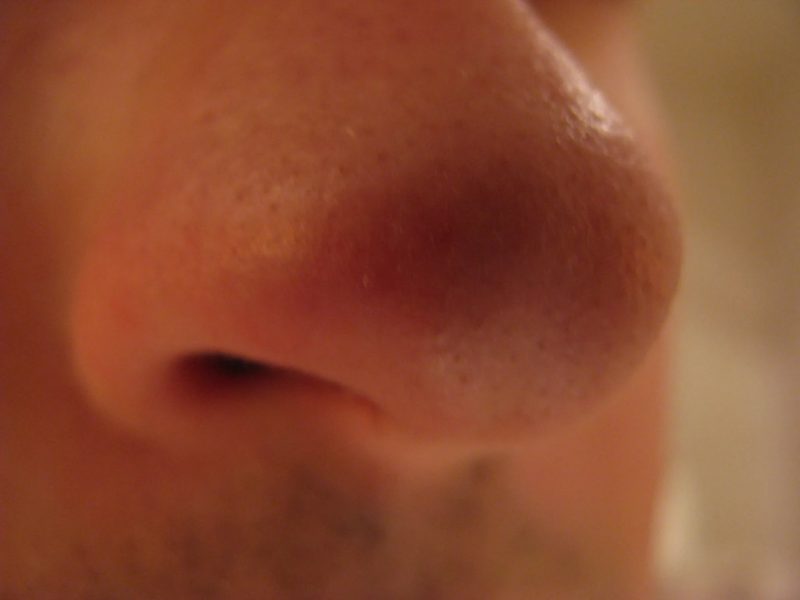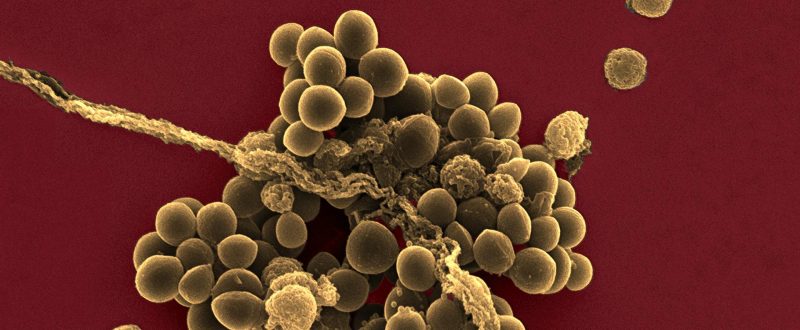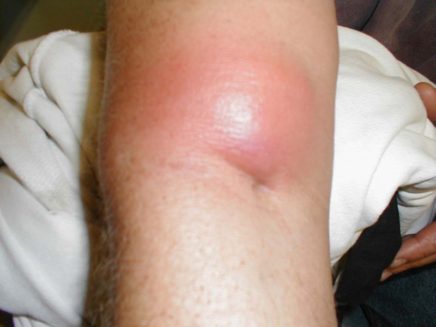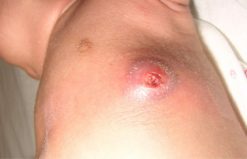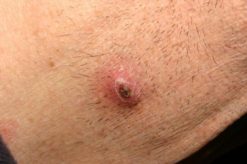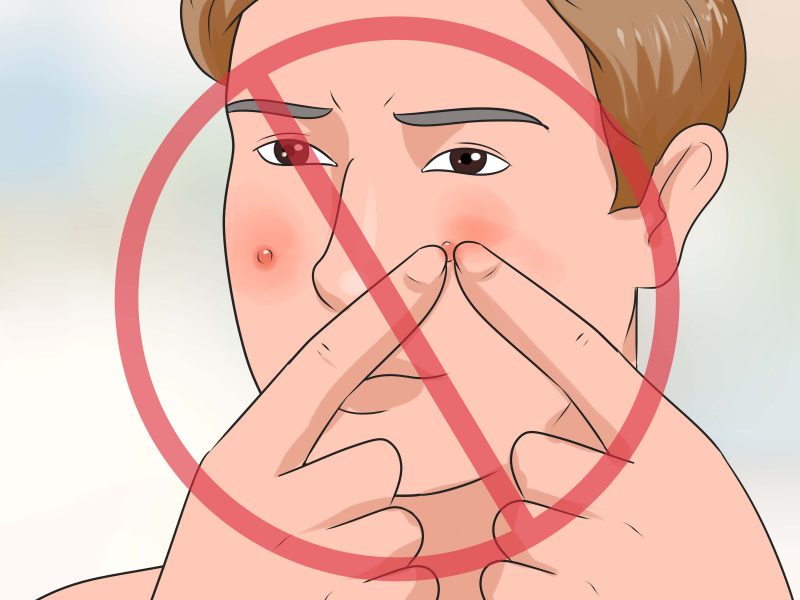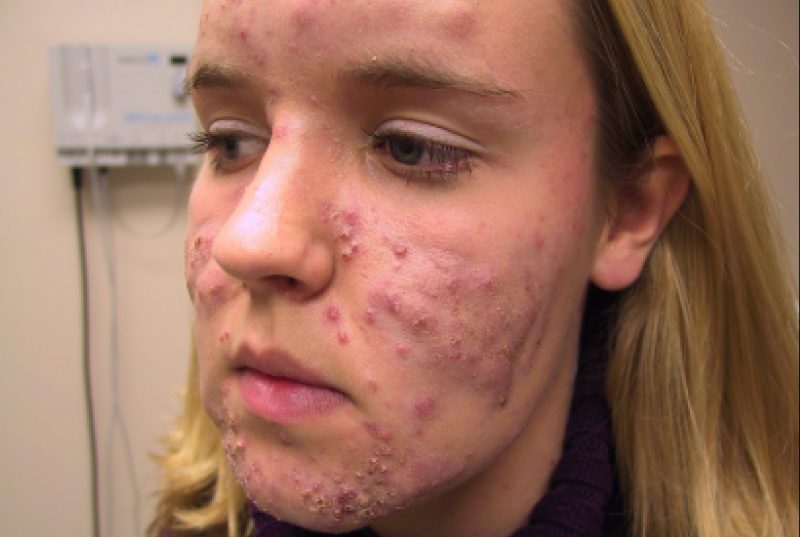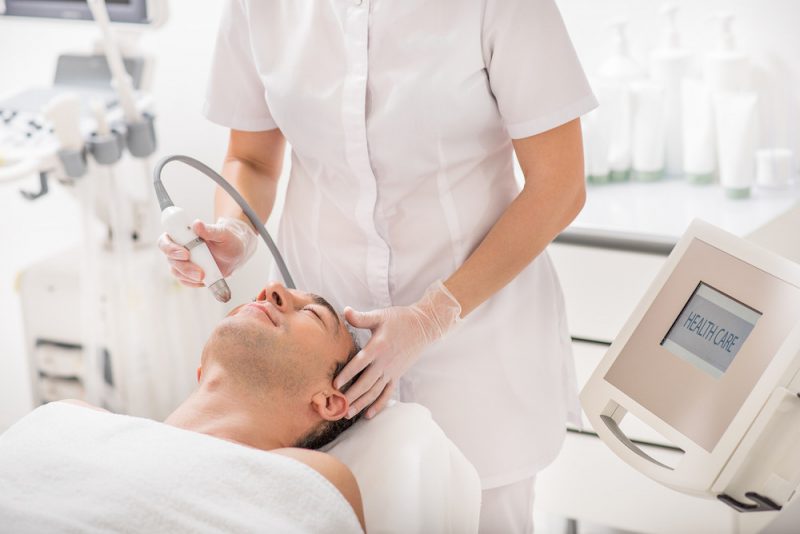A boil on the face is not only an aesthetic problem, but also a serious skin disease that needs to be treated. Such a purulent-necrotic lesion affects not only the hair follicle, but also the connective tissue.
Material Content:
Causes of a boil on the face
Most often boils appear on the face. Dermatologists attribute this to the fact that the skin in these areas is very sensitive to any factors and often suffers from careless washing, shaving, and improper use of cosmetics. Most people have a bad habit of constantly touching their face with their hands, increasing the risk of infection by pathogenic bacteria.
The reasons for the appearance of boils can be different:
- the presence of fungal diseases;
- side effect when using antibiotics and hormones;
- liver disease
- stresses and disorders of the nervous system;
- weakened immunity;
- metabolic disorders;
- lack of vitamins;
- diseases of the digestive tract;
- malfunctions of the endocrine system.
Inflammation appears due to infection with Staphylococcus aureus.
In young children, trivial non-compliance with hygiene rules can often provoke a disease. If there are even minor injuries on the face, and the child touches them with dirty hands, inflammation cannot be avoided. Therefore, children from an early age should be taught to wash their hands after the street and not to touch their face once again. This rule applies to adults. Pathogenic bacteria live everywhere: on handrails of public transport, household items, a smartphone, a computer mouse.And the habit of constantly touching the face, on which there are often small injuries, almost always leads to inflammation.
Often people with very thin and sensitive skin to the slightest negative effects suffer from boils.
The main symptoms of the disease
Boils can appear on any part of the body, and the face is no exception. But most often they are localized precisely in the maxillofacial region, where there are many sebaceous glands.
The main symptoms are:
- pain;
- swelling of the affected area;
- swelling;
- itching
- in rare cases, fever.
Many confuse boils with ordinary acne, at first without taking any action, and only with increasing compaction and intensifying painful sensations begin to sound the alarm.
The disease proceeds in stages:
- Infiltration. This stage is characterized by intensive reproduction of pathogenic microorganisms. The affected area becomes dense, swollen, red, pain and itching appear.
- Suppuration. For 3-4 days, a purulent rod protrudes above the skin. In the center, a kind of “lid” of pus is formed. As the abscess ripens, it is possible to increase the temperature and intensify pain.
- Healing. Swelling and inflammation gradually disappear as purulent contents come out. A deep scar forms at the site of the wound.
To quickly remove the scar and make it invisible, you need to use special preparations, otherwise a small, whitish, slightly retracted scar will remain on the skin.
Read also: effective face cleansing methods
When to see a doctor
Treatment of a boil on the face can be carried out at home, but only in the case of single rashes. If 2 days after the start of therapy no signs of improvement are observed, you should consult a doctor.
To get rid of abscesses, you need to determine the cause of their appearance and eliminate it, but it is impossible to do this without knowledge and experience. For example, if the cause of furunculosis is a violation in the digestive tract, then how much inflammation can not be treated with local means, this will not give effect, since new boils will constantly appear. It is necessary to first establish the work of the intestines and stomach, then the abscesses will pass by themselves and will not appear anymore.
In no case can you squeeze boils, as well as use a variety of wet compresses from tinctures and decoctions or conduct steam procedures. Such treatment can lead to complications and a more active spread of infection.
Inflammation on the face is especially dangerous, as the brain and important blood vessels are in close proximity. The blood supply system here has its own characteristics: a large number of veins that do not have internal valves, which is why any infection spreads lightning fast. Therefore, you do not need to take these abscesses lightly. The nasolabial triangle and forehead are very dangerous areas, since pus can enter the bloodstream and cause chronic furunculosis (this is at best), meningitis and sepsis, which can be fatal.
If there are a lot of boils, you need to contact a dermatologist and be treated under his guidance. Such a disease has its name - furunculosis. It can be very difficult, since multiple deep inflammations cause a lot of discomfort, the patient rises in temperature and his state of health worsens greatly. In such cases, a person is prescribed bed rest, special nutrition, they are forbidden to talk, since any facial movements cause severe pain.
Facial furunculosis treatment
Furunculosis on the face requires a thoughtful and serious approach to treatment. Mandatory use of antiseptics (alcohol or tincture of calendula). Regular treatment helps prevent the spread of infection.The main thing is to wipe the affected area with soft and smooth movements, eliminating sharp and intense pressure.
Such ointments, such as Lekomekol or Dioxizol, have a pronounced healing effect and stretch pus in the early stages.
At the healing stage, ichthyol or zinc ointment is most often used to accelerate regenerative processes.
Conservative drug therapy should contribute to the rapid elimination of symptoms and the breakthrough of the boil.
Autopsy and removal
If the medications do not help, the patient may be prescribed physiotherapy using ultrasound or ultraviolet radiation. They help remove suppuration and promote rapid tissue regeneration.
In rare cases, resort to surgical removal with a scalpel or laser. The classic operation is an incision of inflamed tissue under local anesthesia, removal of pus, treatment with an antiseptic and a bandage.
Laser removal involves burning boils. This method has one significant advantage - after it there are no scars and scars. The recovery period is very short, there is no need to dress the wound.
Care for the foci of the abscess after opening
After classical surgery, the wound must be carefully looked after and dressings made using narrow and long cotton turundas with an antibiotic. The procedure should be done daily for 1-2 weeks, until the pus is stopped and the wound begins to heal.
When to start drinking antibiotics
Antibiotics for boils can be taken only on the recommendation of a doctor, since these drugs have a considerable number of contraindications and side effects. Therefore, they are prescribed only for extensive lesions. But I must say that they well remove suppuration and kill bacteria in the shortest possible time. After the first application, the patient's condition improves markedly.
Prevention
Prevention measures are very simple:
- Observe basic hygiene rules, wash your face regularly, cleanse your skin, and do not touch your face unnecessarily.
- Strengthen immunity, lead a healthy lifestyle, eat right, excluding sweets, fried and fatty dishes. Vegetables, fruits, low-fat meats, fish, and cereals should predominate in the diet.
- Sometimes it is useful to take a course of multivitamins, since the quality of modern products does not always allow saturating the body with useful substances in full.
- Properly care for your skin, paying particular attention to cleansing.
- Carefully handle even the slightest damage, cuts and abrasions. Timely wound treatment reduces the likelihood of staphylococcus getting to zero.
- Monitor your sugar level. High blood glucose creates favorable conditions for different bacteria.
- Timely treat boils to prevent the transition of the disease into a chronic form.
Everyone can follow these simple preventive rules.


